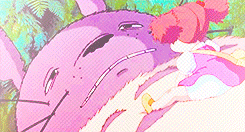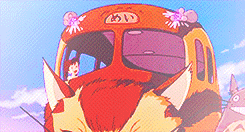Delivery of Sixteenth Record
Anatomy of Planning 10
/////// Sixteenth Record////
The lesson for the day revolves around the Canada Food Guide, food definitions, the story of our food toxic chemicals, and the meatrix.
food :noun /fo͞od/
any nutritious substance that people or animals eat or drink, or that plants absorb, in order to maintain life and growth.

T h e G i s t
For this particular lesson, we did a worksheet based on the Canada Food Guide. Through this nutrition-based pamphlet, I have acquired a broader, insightful knowledge about the food I should and should not consume, and what nutritional value the food I eat will give me. I have learned that the recommended servings of meat and alternatives for females in my age category is two, fruit and vegetables seven, grain products six, and milk and alternatives two. I have also learned that there are numerous factors that influences the number of servings each food group a person needs each day, such as age, , weight, height and appetite. There were also several food definitions that we were responsible to research. Additive is a substance added to something in order to preserve or improve it. GMO stands for genetically modified organisms, and these are organisms whose genetic material has been altered through genetic engineering techniques (genetically modified: yeast, insects, mammals, fish, plants). Factory farming is a system of rearing livestock under intensive methods. Cattles, poultry and pigs are confined under strictly controlled conditions. A herbecide is a substance that is toxic to plants and is used to destroy unwanted vegetation. A pesticide is a substance that is toxic to insects and other organisms, and is used to destroy organisms around cultivated plants and animals. Processed food is also known as "convenience food" or "tertiary-processed food". It is commercially designed for ease of consumption. A toxin is an antigenic poison or venom from animal/plant origin, usually from micro-organisms. These can cause diseases in our bodies even in small concentrations. We also watched a few short films regarding the story of food and the meatrix. Over the last fifity years, our food has changed and has been processed more than ever. It is produced more quickly, bigger, and "more true to its color", however, they don't provide the necessary nutrients we need. So how is our food produced? Back in the days, farmers used to grow crops and rear livestock to fend for their families, and would sell extras in the market. However, these markets kept getting bigger, so the farmers needed to be a lot more efficient with their farming. Our food comes from the soil and seeds, and adequate rain and sunshine is vital for these crops. Farmers, who have 10 000 years of experience, are very knowledgeable of their expertise. However, IOU and other big pesticide companies don't want to return to the "old way" of growing our food. Through such, our water has been polluted, there are far too many pesticides that are used, and 90% of the diversity in America and China has been lost. 1 out of 6 is starving, and 1 out of 6 is eating too too much. So what can we do? Well, we can think about where our food comes from and how it is produced, and we can support our local farms. There are also a lot of things that come from corn and syrup, such as sugar. There is also climate desertification to consider, in which our farms are turning into deserts. There was also the meatrix portion of the short film. In reality, our milk and eggs come from factory farming, which is a system of rearing livestock under intensive methods. Cattle, poultry and pigs are confined under strictly controlled conditions. The livestock are surrounded with their own feces because of the cramped conditions, and scientists have therefore made antibiotics in response. However, these antibiotics get in our bodies as well when we intake these animals, and there is likely chance that these can develop into diseases. There are also different laws regarding animals and livestock, in which you can do cruel procedures to a livestock but not to an animal. There are also toxic chemicals that first began with good intentions. There were the baby clothes and the non-stick pan, which were beneficial but were deemed cancerous and disease-causing. However, these companies, despite their awareness of such, continue to sell us these merchandise that contain toxic chemicals that can cause diseases.
end .








Comments